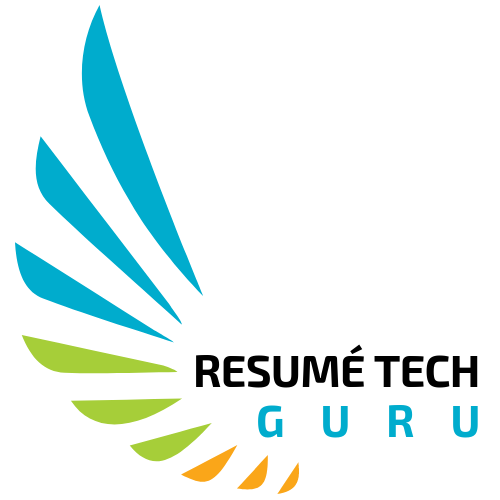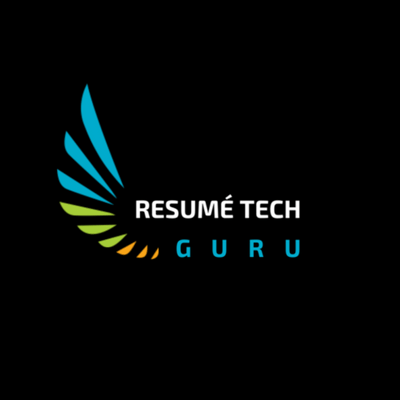If a hiring manager Googled you, how would you show up? If a recruiter were searching LinkedIn to fill an executive-level position at Microsoft, Amazon, or a startup, would you be in the consideration set? If you don’t know, it’s time to take control of your electronic footprint for your next career opportunity.
Lessons from Google
Yes, I do Google myself, but not out of vanity instead for optimizing my business opportunities. My first and last name results lean toward a professional POV with Linkedin and my website www.resumetech.guru securing the top 2 spots followed by Twitter, Instagram, theorg.com, and owntrail.com. There’s logic to the first two since I update them routinely. I’m not a heavy user of the balance, so those are head-scratchers.
For my consulting practice brand presence, I conduct a monthly business Google search. I pay attention to how I fare based upon keywords clients would use to find me, including “Seattle tech resume writer” and “executive career coach.” Initially, I spent an inordinate amount of time on my 2 Google business listings, geo-targeting Seattle and Austin. I add blog posts routinely, yet, I show up on the 2nd page within the Google Search.
When I launched my consulting website a couple of years ago, I paid for Adwords and ran several advertising campaigns. Although they didn’t yield the referral results I’d hoped for, they did show the keywords that drove traffic to my sites. Resume writing was a top keyword, good news. Resume builder was also the top keyword, bad news since I don’t offer an automated version. In the early days, a Monster Insights report revealed my bounce rate was high. If you’re not familiar with the term, it’s the percentage of website visitors who navigate away after viewing only 1 page.
Social Media Statistics
In a Statista report published by H. Tankovska in February 2021, “Market leader Facebook was the first social network to surpass one billion registered accounts and currently sits at more than 2.74 billion monthly active users. The company currently also owns four of the biggest social media platforms, all with over one billion monthly active users each: Facebook (core platform), WhatsApp, Facebook Messenger, and Instagram. In the fourth quarter of 2020, Facebook reported over 3.3 billion monthly core Family product users.” The report discusses other social network platforms; some weren’t on my radar, appearing below rank-ordered by active users from 2.74 billion Facebook down to 300 million Quora. LinkedIn didn’t make the graph due to lower active monthly users measuring 240 million.
- YouTube
- Facebook Messenger
- Wexin/WeChat
- TikTok
- Douyin
- Sina Weibo
- Telegram
- Snapchat
- Kuaishou
- Quora
Getting back to my initial question, how do you appear on these sites when it comes to a hiring manager? Accounts locked down or open kimono? If the latter, I strongly advise that you keep a prospective company in mind. Are you entitled to your personal opinions outside the company about politics, religion, hobbies, and newsmakers? Absolutely. I’m not saying to squash your thoughts; keep in mind another person’s potential conflicting point of view.
Twitter & Facebook & Instagram
Although I feature a Twitter account on my website, I can’t connect the dots to my business value. I dip my toe in from time-to-time. I see colleagues repurposing items from their LinkedIn on Twitter, but it appears to fall into a black hole with limited engagement. People either are ranting or being very PC.
Facebook, for me, is a mixed usage platform. I joined over a decade ago because an employee at Sprint was featuring her artwork on the site. I took an incognito approach, not accepting invites. I canceled my account some time back since I wasn’t accessing it. Then a gastronomy need arose. While on my 2018 Dora-the-Explorer pursuits in Europe and the Caribbean, I needed a new account for restaurant reservations. Yelp and OpenTable hadn’t conquered the global marketplace. Then the Facebook account mothballed when Covid impacted my global travel bucket list. A renaissance transpired when I joined a book writing class in January 2021. It’s where my instructor arrives “Live” on Wednesdays, and my colleagues provide collaborative support. I have to remind myself to go there weekly.
An Instagram button appears on my website, directing you to a mashup of my career consulting practice, travel pursuits, and food & beverage predilections. I have two accounts with one for private usage with friends while another for business. The latter started in February 2019 when I launched my website. I had become a passionate Canva design app user creating my logo, marketing material, and social media posts. Canva offers free templates you can use for Facebook, Instagram, Youtube, Pinterest, and Twitter. Unfortunately, you need to subscribe to the Pro feature to lock in the correct photo aspect ratio for LinkedIn posts. I only have a couple of clients connected with me on Instagram and only had 2 people DM me for career consulting. Once again, not a place where my overall client base hangs out.
While my consulting clients don’t find me on Facebook nor Instagram, LinkedIn tends to be my vetting ground. It makes sense since clients can see my virtual recommendations, work history, services summary, and contact information. Sometimes, clients message me through the Linkedin platform Inmail or contact me via my website contact form. There’s the rare phone call or text.
LinkedIn Social Selling Index
In November of 2007, I was introduced to LinkedIn by a CenturyLink colleague, Jeff Dennison. First, I was apprehensive about joining because I didn’t quite understand it. Similar to the invitation-only Clubhouse, I thought, what value would this bring to my life? Remember the early days barraged by pop-ups for skill endorsement requests for other people like Whack-A-Mole? LinkedIn’s purposed changed when I was looking for a new career adventure after one too many Embarq and CenturyLink M&As. I had hired a certified resume writer in Seattle and had repurposed components for my LinkedIn profile. Recruiters came virtually knocking. I stayed at CenturyLink but moved from a marketing to sales role, and LinkedIn took on new meaning. It was a way to connect with clients or channel partners plus share corporate resources. Then I retired, the need vanished.
When I started my career consulting practices, and the LinkedIn factor ramped up. One-third of my business derives from LinkedIn balanced by referrals and my website. It’s money in my bank account. And that’s why it should be important to you and your career. It’s money in your bank account if you find a higher-paying role. Isn’t it easier to have recruiters come to you vs. the other way around?
To figure out how your brand represents, you can access the LinkedIn Sales Navigator, which features a Social Selling Index (SSI). Check it out here https://www.linkedin.com/sales/ssi based upon 4 components:
- Establish your professional brand: Complete your profile with the customer in mind. Become a thought-leader by publishing meaningful posts.
- Find the right people: Identify better prospects in less time using efficient search and research tools.
- Engage with insights: Discover and share conversation-worthy updates to create and grow relationships.
- Build relationships: Strengthen your network by finding and establishing trust with decision-makers.
As of March 2021, my SSI is 68 out of 100. The score reveals being in the top 10% of my LinkedIn network and top 32% of my Human Resources industry classification. Mine bounces around based upon my weekly activity, with spikes occurring when I publish an article. It’s a strange phenomenon since articles take longer to develop than a random post, but an article receives less eyeballs. The LinkedIn algorithm throttles your distribution of likes, posts, and articles to your direct connections. Be forewarned that not all your connections see what you post or it may be delayed. I found that out a couple of months ago when someone’s else posts hit my feed 3 days after he originally posted it.
Key Lesson
The question is what’s your bounce rate?
How you appear on social media can either put you in the executive search consideration set or diminish a terrific opportunity at another company seeking your skill sets. If you abandoned your Facebook page, haven’t looked at your Twitter feed, or neglected your LinkedIn profile, think of it as Spring cleaning. Now is the time to conduct your annual social media performance reviews.



